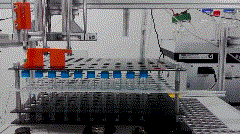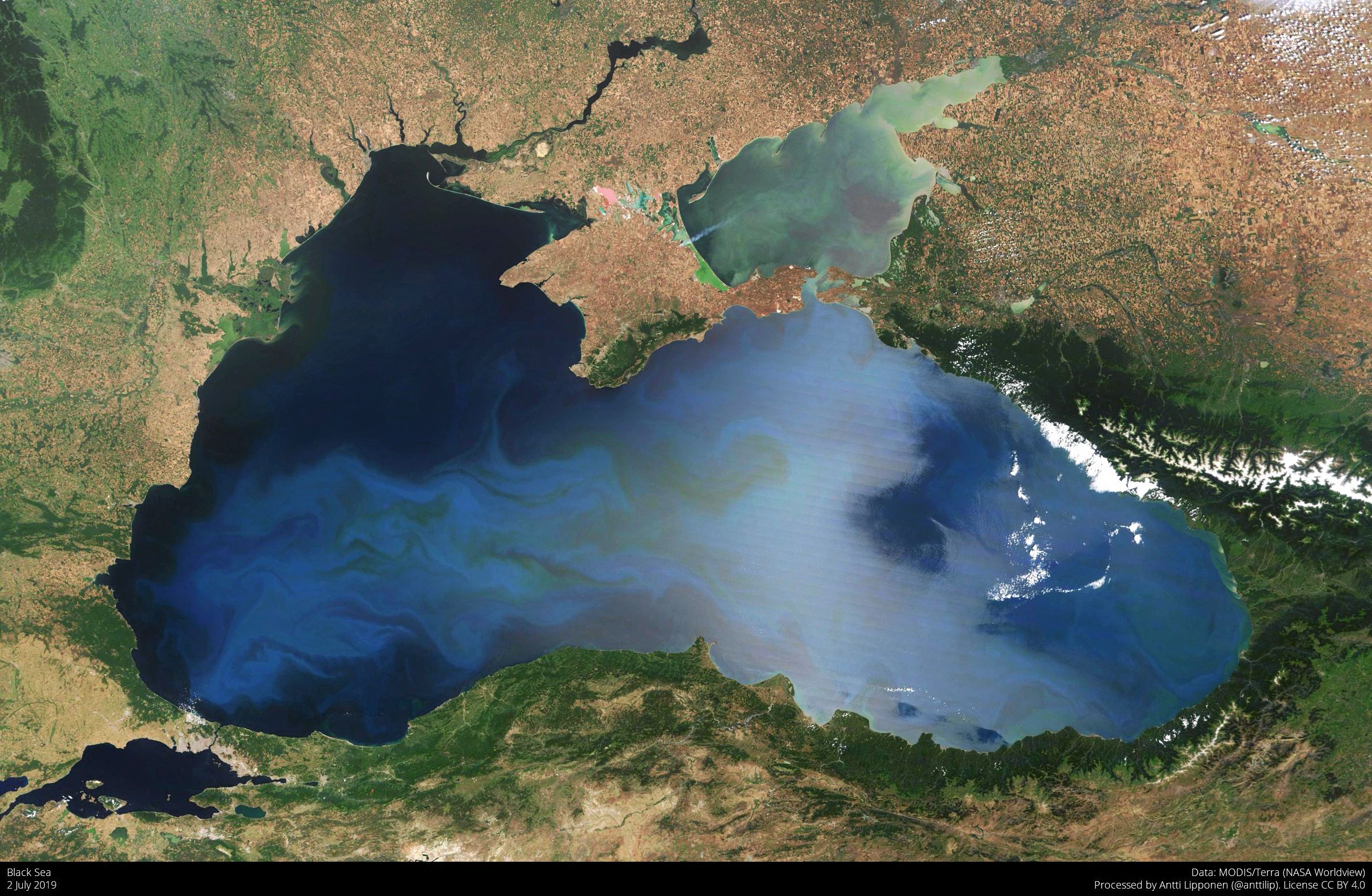|
Chlorobactane
Chlorobactane is the diagenetic product of an aromatic carotenoid produced uniquely by green-pigmented green sulfur bacteria (GSB) in the order ''Green sulfur bacteria, Chlorobiales''. Observed in organic matter as far back as the Paleoproterozoic, its identity as a diagnostic biomarker has been used to interpret ancient environments. Background Chlorobactene is a monocyclic accessory pigment used by green sulfur bacteria to capture electrons from wavelengths in the visible light spectrum. Green sulfur bacteria (GSB) live in anaerobic and sulfidic (Euxinia, euxinic) zones in the presence of light, so they are found most often in Meromictic lake, meromictic lakes and ponds, sediments, and certain regions of the Black Sea.Imhoff, Johannes F. (1995). “Taxonomy and Physiology of Phototrophic Purple Bacteria and Green Sulfur Bacteria”. Anoxygenic Photosynthetic Bacteria, pp 1 – 15. Kluwer Academic Publishers. The enzyme CrtU converts Gamma-Carotene, γ-carotene into chlorobactene ... [...More Info...] [...Related Items...] OR: [Wikipedia] [Google] [Baidu] |
Okenane
Okenane, the diagenetic end product of okenone, is a biomarker for Chromatiaceae, the purple sulfur bacteria. These anoxygenic phototrophs use light for energy and sulfide as their electron donor and sulfur source. Discovery of okenane in marine sediments implies a past euxinic environment, where water columns were anoxic and sulfidic. This is potentially tremendously important for reconstructing past oceanic conditions, but so far okenane has only been identified in one Paleoproterozoic (1.6 billion years old) rock sample from Northern Australia. Background Okenone is a carotenoid, a class of pigments ubiquitous across photosynthetic organisms. These conjugated molecules act as accessories in the light harvesting complex. Over 600 carotenoids are known, each with a variety of functional groups that alter their absorption spectrum. Okenone appears to be best adapted to the yellow-green transition (520 nm) of the visible spectrum, capturing light below marine plankton in ... [...More Info...] [...Related Items...] OR: [Wikipedia] [Google] [Baidu] |
Euxinia
Euxinia or euxinic conditions occur when water is both anoxic and sulfidic. This means that there is no oxygen (O2) and a raised level of free hydrogen sulfide (H2S). Euxinic bodies of water are frequently strongly stratified; have an oxic, highly productive, thin surface layer; and have anoxic, sulfidic bottom water. The word "euxinia" is derived from the Greek name for the Black Sea (Εὔξεινος Πόντος (''Euxeinos Pontos'')) which translates to "hospitable sea". Euxinic deep water is a key component of the Canfield ocean, a model of oceans during part of the Proterozoic eon (a part specifically known as the Boring Billion) proposed by Donald Canfield, an American geologist, in 1998. There is still debate within the scientific community on both the duration and frequency of euxinic conditions in the ancient oceans. Euxinia is relatively rare in modern bodies of water, but does still happen in places like the Black Sea and certain fjords. Background Euxinia most fr ... [...More Info...] [...Related Items...] OR: [Wikipedia] [Google] [Baidu] |
Diagenetic
Diagenesis () is the process of physical and chemical changes in sediments first caused by water-rock interactions, microbial activity, and compaction after their deposition. Increased pressure and temperature only start to play a role as sediments become buried much deeper in the Earth's crust. In the early stages, the transformation of poorly consolidated sediments into sedimentary rock (lithification) is simply accompanied by a reduction in porosity and water expulsion (clay sediments), while their main mineralogical assemblages remain unaltered. As the rock is carried deeper by further deposition above, its organic content is progressively transformed into kerogens and bitumens. The process of diagenesis excludes surface alteration (weathering) and deep metamorphism. There is no sharp boundary between diagenesis and metamorphism, but the latter occurs at higher temperatures and pressures. Hydrothermal solutions, meteoric groundwater, rock porosity, permeability, dissolut ... [...More Info...] [...Related Items...] OR: [Wikipedia] [Google] [Baidu] |
Carotenoid
Carotenoids () are yellow, orange, and red organic pigments that are produced by plants and algae, as well as several bacteria, archaea, and fungi. Carotenoids give the characteristic color to pumpkins, carrots, parsnips, corn, tomatoes, canaries, flamingos, salmon, lobster, shrimp, and daffodils. Over 1,100 identified carotenoids can be further categorized into two classes xanthophylls (which contain oxygen) and carotenes (which are purely hydrocarbons and contain no oxygen). All are derivatives of tetraterpenes, meaning that they are produced from 8 isoprene units and contain 40 carbon atoms. In general, carotenoids absorb wavelengths ranging from 400 to 550 nanometers (violet to green light). This causes the compounds to be deeply colored yellow, orange, or red. Carotenoids are the dominant pigment in autumn leaf coloration of about 15-30% of tree species, but many plant colors, especially reds and purples, are due to polyphenols. Carotenoids serve two key roles in p ... [...More Info...] [...Related Items...] OR: [Wikipedia] [Google] [Baidu] |
Gas Chromatography
Gas chromatography (GC) is a common type of chromatography used in analytical chemistry for Separation process, separating and analyzing compounds that can be vaporized without Chemical decomposition, decomposition. Typical uses of GC include testing the purity of a particular substance, or separating the different components of a mixture. In preparative chromatography, GC can be used to prepare pure compounds from a mixture. Gas chromatography is also sometimes known as vapor-phase chromatography (VPC), or gas–liquid partition chromatography (GLPC). These alternative names, as well as their respective abbreviations, are frequently used in scientific literature. Gas chromatography is the process of separating compounds in a mixture by injecting a gaseous or liquid sample into a mobile phase, typically called the carrier gas, and passing the gas through a stationary phase. The mobile phase is usually an inert gas or an Reactivity (chemistry), unreactive gas such as helium, arg ... [...More Info...] [...Related Items...] OR: [Wikipedia] [Google] [Baidu] |
Kerogen
Kerogen is solid, insoluble organic matter in sedimentary rocks. It consists of a variety of organic materials, including dead plants, algae, and other microorganisms, that have been compressed and heated by geological processes. All the kerogen on earth is estimated to contain 1016 tons of carbon. This makes it the most abundant source of organic compounds on earth, exceeding the total organic content of living matter 10,000-fold. The type of kerogen present in a particular rock formation depends on the type of organic material that was originally present. Kerogen can be classified by these origins: lacustrine (e.g., algal), marine (e.g., planktonic), and terrestrial (e.g., pollen and spores). The type of kerogen depends also on the degree of heat and pressure it has been subjected to, and the length of time the geological processes ran. The result is that a complex mixture of organic compounds resides in sedimentary rocks, serving as the precursor for the formation of hyd ... [...More Info...] [...Related Items...] OR: [Wikipedia] [Google] [Baidu] |
Purple Sulfur Bacteria
The purple sulfur bacteria (PSB) are part of a group of Pseudomonadota capable of photosynthesis, collectively referred to as purple bacteria. They are anaerobic or microaerophilic, and are often found in stratified water environments including hot springs, stagnant water bodies, as well as microbial mats in intertidal zones.Hunter, C.N., Daldal, F., Thurnauer, M.C., Beatty, J.T"The Purple Phototropic Bacteria" '' Springer-Dordrecht'', 2008. Unlike plants, algae, and cyanobacteria, purple sulfur bacteria do not use water as their reducing agent, and therefore do not produce oxygen. Instead, they can use sulfur in the form of sulfide, or thiosulfate (as well, some species can use H2, Fe2+, or NO2−) as the electron donor in their photosynthetic pathways. The sulfur is oxidized to produce granules of elemental sulfur. This, in turn, may be oxidized to form sulfuric acid. The purple sulfur bacteria are largely divided into two families, the Chromatiaceae and the Ectothiorhodo ... [...More Info...] [...Related Items...] OR: [Wikipedia] [Google] [Baidu] |
Isorenieratene
Isorenieratene /ˌaɪsoʊrəˈnɪərətiːn/ is a carotenoid light-harvesting pigment produced exclusively by the genus ''Chlorobium'', which are the brown-colored strains of the family of green sulfur bacteria ( Chlorobiaceae). Green sulfur bacteria are anaerobic photoautotrophic organisms, meaning they perform photosynthesis in the absence of oxygen using hydrogen sulfide in the following reaction: organic compounds Such anoxygenic photosynthesis requires reduced sulfur and light; thus, this metabolism occurs only in strictly photic and euxinic environments. Therefore, the discovery of isorenieratene and its derivatives in sediments and rocks are helpful biomarkers to identify euxinic water columns in the photic zone. Structure Isorenieratene has the chemical formula C40H48. It is a diaromatic carotenoid with a regularly-linked isoprenoid chain, except for a single tail-to-tail linkage in the middle of the molecule. Isorenieratene has a characteristic 1-alkyl-2,3,6-trimethyl ... [...More Info...] [...Related Items...] OR: [Wikipedia] [Google] [Baidu] |
Methyl Group
In organic chemistry, a methyl group is an alkyl derived from methane, containing one carbon atom bonded to three hydrogen atoms, having chemical formula (whereas normal methane has the formula ). In formulas, the group is often abbreviated as Me. This hydrocarbon group occurs in many organic compounds. It is a very stable group in most molecules. While the methyl group is usually part of a larger molecule, bonded to the rest of the molecule by a single covalent bond (), it can be found on its own in any of three forms: methanide anion (), methylium cation () or methyl radical (). The anion has eight valence electrons, the radical seven and the cation six. All three forms are highly reactive and rarely observed. Methyl cation, anion, and radical Methyl cation The methylium cation () exists in the gas phase, but is otherwise not encountered. Some compounds are considered to be sources of the cation, and this simplification is used pervasively in organic chemistry. For ex ... [...More Info...] [...Related Items...] OR: [Wikipedia] [Google] [Baidu] |
Meromictic Lake
A meromictic lake is a lake which has layers of water that do not intermix. In ordinary, holomictic lakes, at least once each year, there is a physical mixing of the surface and the deep waters. The term ''meromictic'' was coined by the Austrian Ingo Findenegg in 1935, apparently based on the older word ''holomictic''. The concepts and terminology used in describing meromictic lakes were essentially complete following some additions by G. Evelyn Hutchinson in 1937. Characteristics Most lakes are ''holomictic'': at least once per year, the surface and the deep waters mix. In monomictic lakes, the mixing occurs once per year; in dimictic lakes, it occurs twice a year (typically spring and autumn), and in polymictic lakes, the mixing occurs several times a year. In meromictic lakes, the layers of water can remain unmixed for years, decades, or centuries. Meromictic lakes can usually be divided into three sections or layers. The bottom layer is the ''monimolimnion''; the ... [...More Info...] [...Related Items...] OR: [Wikipedia] [Google] [Baidu] |







